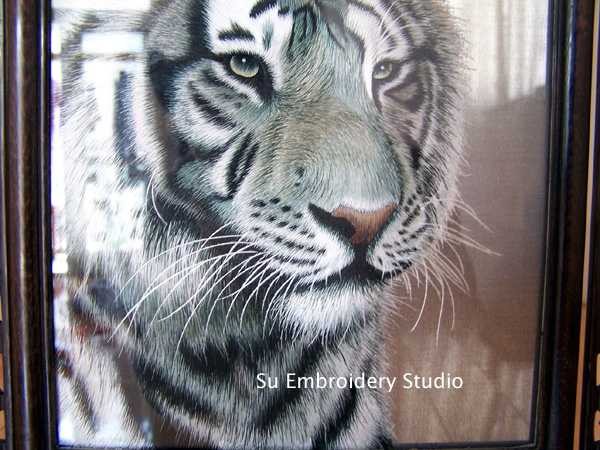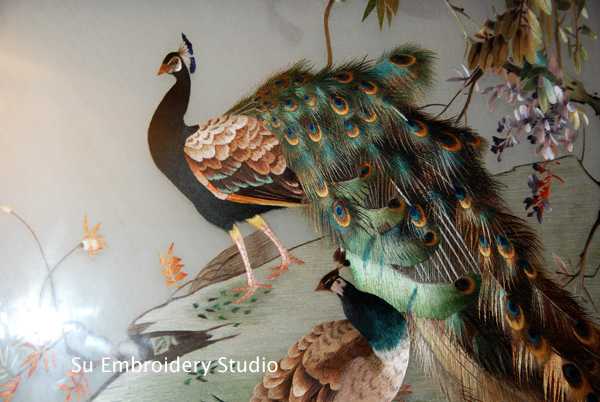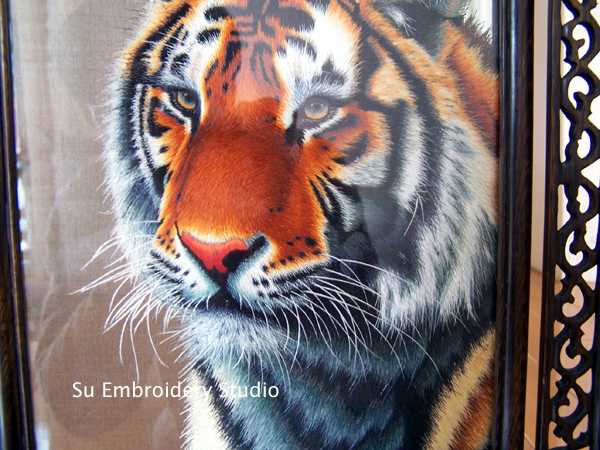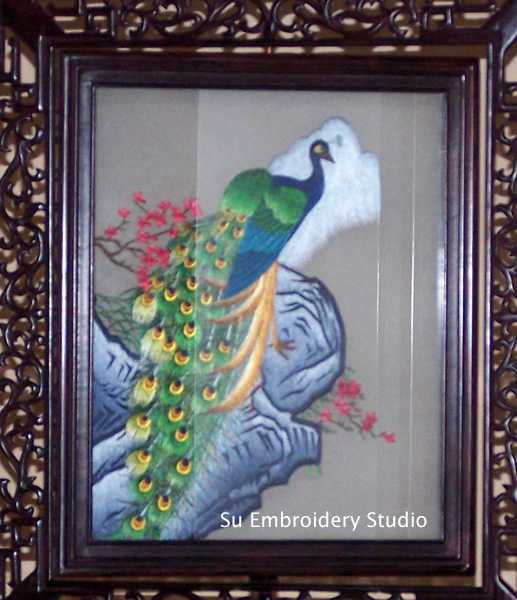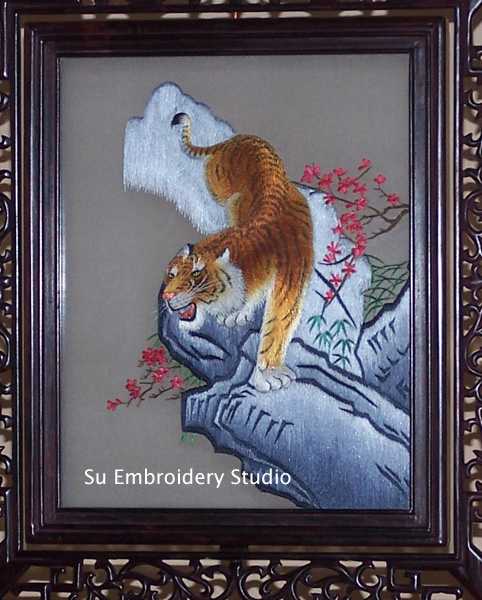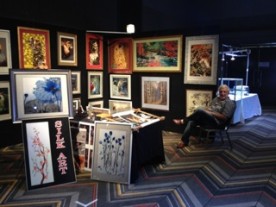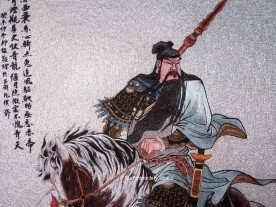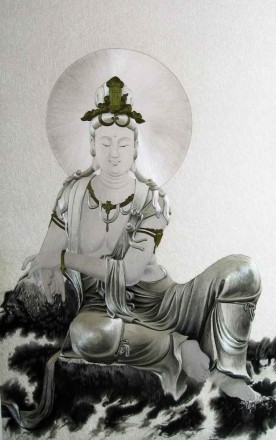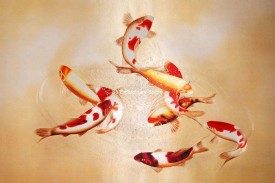Double sided embroidery is the cream of Chinese embroidery art. If Chinese embroidery is a majestic crown, double sided embroidery is the brightest pearl adorning the crown. In our previous article 'Introduction to Chinese double sided embroidery', we classified Chinese double sided embroideries in terms of the embroidery size, frame styles and embroidery patterns. In this article we will explore the origin of Chinese double sided embroidery, its history and innovations. To many embroidery enthusiasts who often wonder who invented Chinese double sided embroidery techniques, this article will reveal the answer.
Double-sided embroidery is a sophisticated technique in traditional Chinese embroidery, dating back to the Song Dynasty (960-1279 AD). According to experts, double-sided embroidery appeared in the Song Dynasty (960-1279 AD), but it was mostly used for daily items such as scrolls and handkerchiefs. The development and perfection of double-sided embroidery are the results of continuous exploration and practice by embroiderers over a long period, rather than the invention of a single individual or specific period.
The characteristic of double-sided embroidery is that, on a single fabric, a needle simultaneously embroiders patterns with matching colors on both sides, requiring both sides to be neat and evenly stitched. This embroidery technique differs from single-sided embroidery, which only emphasizes the intricacy of the front side, while double-sided embroidery demands high levels of delicacy and consistency on both sides.
Double Sided Embroidery with the Same Pattern on Both Sides, Two Peacocks
In modern times, it is rare to find artistic double-sided embroidery among the four famous embroideries (Xiang embroidery, Su embroidery, Yue embroidery, and Shu embroidery), indicating that double-sided embroidery was highly valued and technically demanding in history. After the liberation, through the research and improvement by Suzhou embroidery artisans, double-sided embroidery saw significant development. Double-sided embroidery products from Suzhou were often used as national gifts and received high praise from people at home and abroad.
Therefore, the invention of double-sided embroidery is attributed to the collective wisdom and long-term accumulation of ancient Chinese embroiderers, rather than a specific inventor.
However, it is worth noting that Suzhou embroidery artisans played a crucial role in the promotion and development of double-sided embroidery.
Suzhou embroidery artisans not only inherited traditional techniques but also achieved new heights in double-sided embroidery through continuous innovation and improvement. Suzhou embroidery artisans conducted in-depth research and improvement on double-sided embroidery techniques. They mastered and applied key techniques of double-sided embroidery, such as hiding thread ends in the final stitches to ensure that no threads are visible on both sides, and arranging stitches evenly to make both sides of the pattern neat and evenly stitched.
The Suzhou Embroidery Research Institute played an important role in the development of double-sided embroidery. Established in 1954, the institute is dedicated to the inheritance and innovation of Suzhou embroidery traditional techniques, training a large number of skilled talents, and innovating in materials, techniques, and products.
Suzhou embroidery artisans developed a new technique called "Double-sided Three Different Embroidery" based on double-sided embroidery, where the patterns, stitches, and colors on both sides are different, unprecedented in the history of Suzhou embroidery and even Chinese embroidery.
Double Sided Embroidery with the Different Patterns on Both Sides, Brown Tiger on one Side
Double Sided Embroidery with the Different Patterns on Both Sides, White Tiger on the Other Side
Suzhou embroidery artisans have elevated double-sided embroidery to new heights in art through exquisite craftsmanship and unique styles. They pay attention to the reasonable use of threads and variations in silk texture, flexibly using stitches according to different themes to fully express the texture of objects.
Suzhou embroidery artisans have spread the art of double-sided embroidery to various parts of the world through participation in domestic and international exhibitions and cultural exchange activities, making it a brilliant pearl in the treasure trove of Chinese culture.
Double Sided Embroidery with the Different Patterns on Both Sides, Peacock on One Side
Double Sided Embroidery with the Different Patterns on Both Sides, Tiger on the Other Side
In conclusion, the art of double-sided embroidery encapsulates centuries of tradition, innovation, and skill within the realm of Chinese embroidery. Dating back to the Song Dynasty (960-1279 AD), this sophisticated technique has evolved from its humble beginnings as a practical craft to a revered form of artistic expression. While its origins are rooted in collective wisdom and long-term accumulation, the pivotal role played by Suzhou embroidery artisans cannot be overstated. Through meticulous research, innovation, and dedication, these artisans have propelled double-sided embroidery to new heights, refining techniques and pushing the boundaries of artistic possibility. From the establishment of the Suzhou Embroidery Research Institute to the development of groundbreaking techniques such as "Double-sided Three Different Embroidery," Suzhou artisans have been at the forefront of advancing this ancient craft. Today, double-sided embroidery stands as a shining example of Chinese cultural heritage, celebrated for its exquisite craftsmanship and enduring beauty on both domestic and international stages.
by Su Embroidery Studio (SES), Suzhou China
SES is dedicated to Chinese Silk Embroidery Art and High-End Custom Embroidery
Find SES's embroidery work at Chinese Silk Embroidery for Sale.


